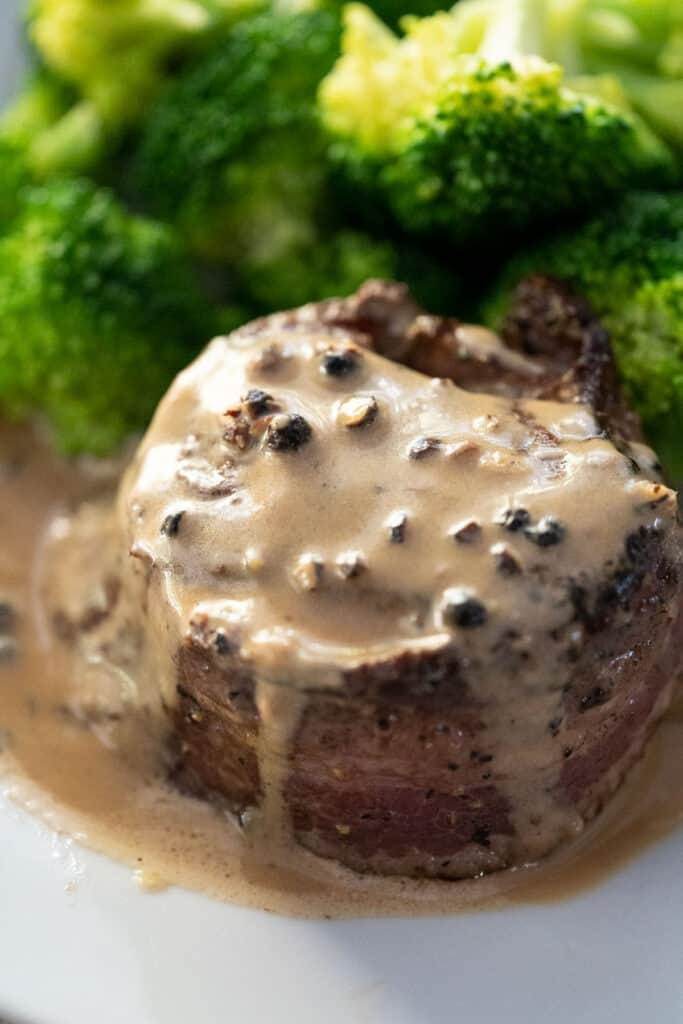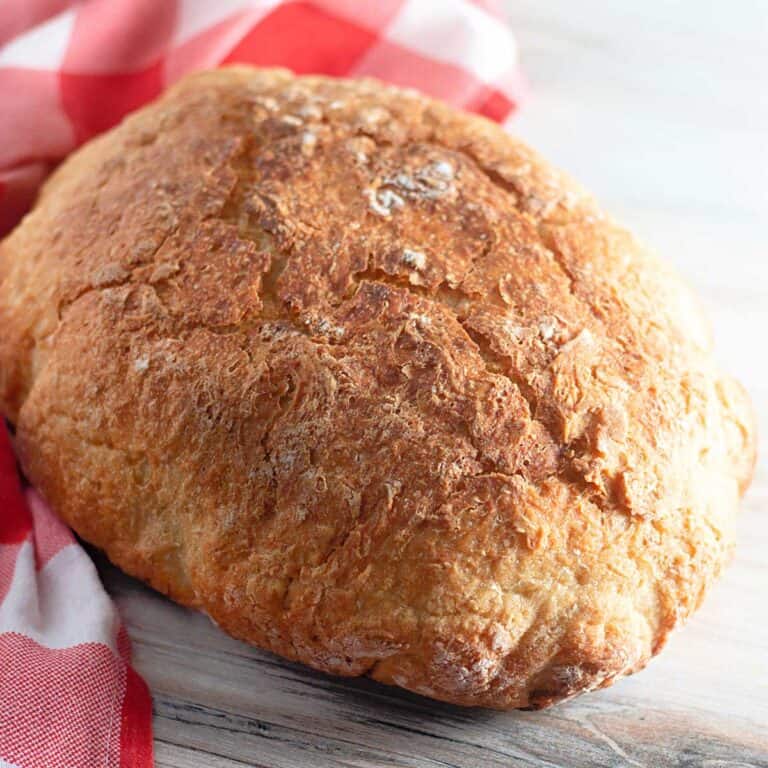How to Choose a Good Steak
This post may contain affiliate links. If you purchase through links on our site, we may earn a commission.
Choosing the best steak is the first step to making the best steak at home. Steak can be a tricky thing to get just right, so use these tips on how to choose a good steak at the grocery store.

Want to save this recipe?
Enter your email & I’ll send it to your inbox. Plus, get great new recipes from me every week!
What to look for when buying a steak
Whether you’re clueless or you’re one of those steak lovers who already has a specific cut in mind that you are going to buy, each steak is distinct and you’ll need to know how to choose the best of the particular cut you’re looking at.
Marbling
Marbling is the white lines that you’ll notice running through each steak. Marbling is simply veins of fat. That fat is what increases the flavor and juiciness of the steak. As the steak cook, the fat melts and the steak soaks up the flavor and moisture from the melted fat.
The more marbling a steak contains, the more expensive it will be. If you want a less fatty cut of meat, you’ll also end up with less flavor, but those with less marbling will also be more tender and easy to cook without becoming tough.

Grade
The grade that the USDA gives a steak represents its overall quality. Higher grades often coincide with more marbling and higher pricing. When looking at the steaks in your grocery store, you have the four following options for the grade, from the highest quality to the lowest:
- Prime
- Choice
- Select
- Standard
Prime will be the highest quality, best cut of steak and the most expensive. As you move down the grades, the quality and the standard will also move down.
It’s important to mention that standard is not necessarily bad quality meat. Standard can still give you a great steak. It’s just not going to have the attributes that are rated higher for flavor, tenderness, and juiciness as the higher grade steaks will have. You can still make a good steak with standard grade meat.
Thickness
Thin steaks are appropriate for some recipes, but if you are going to make a steak just to have it stand on it’s own as a main course with some side dishes, you don’t want a thin steak. They are difficult to cook well on their own. It is very easy to overcook a thin steak whether it’s on the grill, in the oven, or in a frying pan.
If you’re new to cooking steaks, you may also want to avoid steaks that are too thick. Especially if you want your steak to be anywhere near well done. These steaks can take a long time to cook and can lead to the outside being done too soon before the inside, resulting in a tough outer layer.
To avoid these issues, you’ll want to choose a steak that is at least 1-inch thick. This size steak will make it a little easier to cook without ruining your meal. After mastering the 1-inch steak, you can venture out and try different sizes cooked and various methods of cooking them to get the perfect steak.
Price
As discussed under the grade section, higher prices typically promise more marbling, which is considered more premium. Still, even very expensive streaks can have issues like thick connective tissue that will ruin even the otherwise best cut of meat. Make sure you are inspecting each individual steak cut, no matter the cost, to find the right one.
Quick reference for choosing the best steak
The most tender steak
The top five most tender cuts of steak are:
- Filet Mignon
- Flat Iron Steak
- Top Sirloin Steak
- Strip Steak
- Ribeye Steak
Tougher meat is better for slow cooking. For steaks, look for fine meat grain, the least connective tissue possible, and the fewest muscle groups in a single cut.
Find a steak that is soft to the touch and lean to medium concentrations of marbling. Even typically tender cuts of meat can have imperfections, so pay attention to these details for the best results.
Best Cuts of Meat for Special Occasions
Beef tenderloin, top loin, T-bone steak, and ribeye steaks are your best choice for a special occasion. These are more expensive but are the richest, most opulent steaks you can get.
Best Beef Steak Cuts for Grilling
Top loin, T-bone, tenderloin, and ribeye are excellent grilling steaks. Flank steak, skirt steak, and tri-tip steak work well too, but it’s best to marinate them beforehand for the best results.
Sirloin steak is another good choice but watch it carefully because it can dry out easily.
Also, keep in mind that those higher quality steaks will a lot of marbling will be higher in fat. As that fat melts on the grill, it can cause flame flair ups which can be dangerous. For that reason, some people choose to cook leaner cuts of steak on the grill. For best results, keep high fat meat from resting directly above high heat.

Choosing the right cut
Even with all the information you can get about steaks, you can’t always choose the perfect steak. Different cuts of steak vary depending on the different parts of a cow. They, all have different textures, flavors, and extents of marbling. You can narrow down what may be the best steak for you, but you can always end up with a result that was unexpected because of the variations that are out of your control.
- New York Strip Steak: This cut is from the shorter side of the beef loin, also known as the short loin. It’s tender and typically has medium marbling. It has less marbling than a tenderloin or ribeye steak. This is a full bodied steak with a rich beefy flavor. You should choose this steak if you frequently cook steak and you want a cost-effective cut to use on a regular basis.
- Rib eye steak: Ribeye is cut from the beef rib primal cut. Ribeyes can be bought with the bone-in or as boneless cuts. Bone-in cuts are more expensive than the less expensive boneless cut. These are tender, juicy, and flavorful steaks and typically have a lot of marbling. The marbling contributes to their tenderness and flavor and as it melts it keeps the steaks juicy on the grill. Large amounts of fat cause your steak to drip as it cooks, so watch out for high flames on the grill.
- Top Sirloin: Sirloin is juicier and more tender than cheaper cuts but still more affordable than premium steaks. It’s a naturally lean, thick cut of steak that has a bold, beefy flavor. It may be a little less tender than more expensive cuts, but it makes up for it with an amazing flavor that works well even with light seasoning. This is one of the most popular grilling steak cuts and is great plain or with heavy seasoning or marinade.
- Prime Rib: Prime rib takes the prize for the most tender and juicy flavor of all the cuts. Prime rib steaks are expensive, so they are usually saved for special occasions or holidays. Bone-in prime rib is juicer than boneless, but both have a lot of marbling. Prime rib has a large “eye” of meat in the center which is marbled with fat and makes the cut very juicy and flavorful.
- Tri-Tip Steak: Tri-tip is more popular than it once was but it probably still won’t make it on most people’s lists of the best steak cuts. It’s a triangular cut of beef cut from the bottom of the sirloin that is named after its triangular shape. High temperatures dry out this steak too quickly, so it needs to be cooked quickly to enhance its flavor and keep it juicy. This steak cut is rich in meaty flavor and lower in fat than other cuts, which is why it can dry out easily. It is still considered a quality cut of meat because of its great flavor.
- Skirt Steak: Skirt steak is a long, flat cut of beef from one of the most flavorful and fatty parts of the cow, the plate section. This steak is thinner and less expensive than other cuts, but it is juicy from its heavy marbling. This steak is commonly used for dishes like tacos, fajitas, and carne asada because it’s flavorful and cooks quickly. Skirt steak is one of the most flavorful cuts of beef you can get, but watch out for connective tissue when you’re choosing your skirt steak.
- T-bone: T-bone steak is a more expensive option and probably the easiest for most people to identify because it has a T-shaped bone running through it. This bone-in steak is also known as a Porterhouse steak. It includes both tenderloin and strip steak in the same piece, so you get a variety of two different types of steak in one. The only problem is they cook at different speeds, which can make cooking challenging. Make sure to keep the tenderloin side farther from the heat and sear your steak before cooking it over lower heat. T-bone is great for grilling and the generous amounts of fat it contains keep it moist and flavorful.
- Filet Mignon: Filet mignon is a lean, tender cut of beef from the small end of the tenderloin. This cut is located near the sponge of the cow and is one of the most expensive steaks on the market, as well as one of the most tender. Even though it is very expensive, it lacks marbling and usually ends up being a less flavorful cut than others. That’s why this cut is usually cooked in a lot of butter or paired with a fatty meat like bacon.
Other things to look for when buying steak
No matter what cut of steak you’ve decided to buy, there are some general signs to look for that indicate that the steak is fresh. Be sure to pay attention to these things:
- The steak should have a good bright red color.
- You should be able to see that the steak cut is moist but there should not be excess liquid. The fresher the steak is, the less moisture will be accumulated in the packaging.
- The steak shouldn’t have any brown spots. Brown spots are signs of oxidation and the start of decay.
- The cut should be even and not ragged or ridged.
- Avoid packaging that is torn or damaged in any way.
- The steak should feel cold to the touch and firm but not hard.
- The expiration, use by, or freeze by date should allow you plenty of time for preparation. Keep in mind that plans change and you may need to put off cooking your steaks for a day or two. Buy accordingly to allow room for these instances.
Now that you’re practically an expert on choosing the right steak, take all of your new knowledge (and maybe this blog post on your phone for reference) to the store and choose the best steak you’ve ever chosen and enjoy it!







